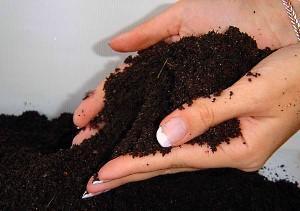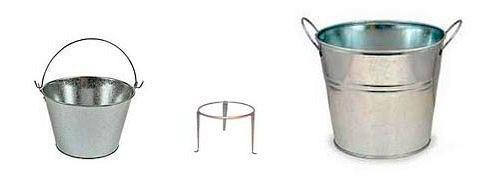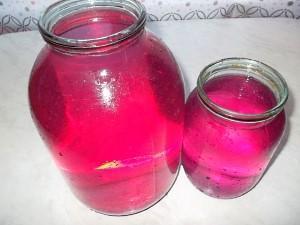Preparing the land for seedlings: how to do it right?
 The future harvest directly depends on what kind of soil for seedlings will be. The features of preparing the land before planting work will be discussed in more detail below.
The future harvest directly depends on what kind of soil for seedlings will be. The features of preparing the land before planting work will be discussed in more detail below.
Many summer residents begin to actively prepare for spring plantings in the fall, when they prepare the land for seedlings for the next season. Self-preparation of soil has a number of important features that must be taken into account in the process of creating fertile soil. When even one significant factor is overlooked, the risk of plant disease or lack of a rich harvest increases dramatically. Read the article about sowing pepper for seedlings!
General requirements for land for seedlings
Initially, we will consider the main characteristics that the land must meet for seedlings. The list of the main requirements for the soil invariably includes:
- balance - all soil components must be in certain proportions;
- lack of germs - when there are pathogens or weed seeds in the soil, there is no need to talk about productivity;
- fertility - the best soil for seedlings always contains the required amount of nutrients;
- looseness and moisture - life-giving moisture must be supplied to the root system along with a sufficient amount of oxygen;
- purity - the presence of harmful metals, industrial waste, aggressive chemicals, etc. is excluded in the soil for seedlings.
Compliance with all of the above conditions guarantees the health of the plants, their rapid growth, as well as the subsequent ripening of fruits, the size and taste of which, no doubt, will delight gardeners.
How to start preparing the land for seedlings?
It is categorically not recommended to use the soil in the form in which it was taken from the personal plot for planting seeds. The fact is that it does not possess the properties necessary for the speedy germination of seeds, and in some cases it can cause irreparable harm to plants. In addition, such soil can be compacted, as a result of which the grown crops will not receive enough moisture or air. Therefore, the question of how to prepare the land for seedlings should be approached with all responsibility and scrupulousness.
At the initial stage, it is important to mix the taken soil with the following nutrient components:
- river sand;
- sawdust (sometimes it can be replaced with fine peat);
- rotted manure (in some cases, you can add compost or humus).
As for the proportions in which you want to mix the listed components, they usually look like this: 1: 1: 0.5: 0.5.
In other words, a similar part of humus is taken for one part of the cultivated soil, successively mixing the resulting mass with 0.5 parts of river sand and sawdust. This substrate is then sieved through a prepared sieve with fine holes to get rid of large lumps that cause soil compaction.
Soil adaptation for seedlings
The next step in preparing the land for seedlings will be its adaptation to a specific culture. So, for example, when growing tomato it is recommended to add crushed calcium-fortified chicken eggshells to the soil.
For cucumbers, it is useful to add about 200 grams of ash to the substrate, which is rich in useful trace elements that protect plants from all kinds of diseases.
For beetroots, the soil can be fertilized with dry sawdust, which provides a full flow of air.
For almost every culture, the creation of living land is beneficial. This type of soil contains a sufficient amount of moisture and humus, allowing the plant to develop the root system unhindered.
It is forbidden to introduce synthetic fertilizers into such soil, polluting the substrate with nitrates and depleting the fertile natural layer.
Peat, silt, composts, bird droppings, etc. can be used as the introduced substances. In this case, living soil for seedlings will be an ideal place for growing any fruit and vegetable crops.
Disinfection of soil
At the final stage of preparing the land, it is processed from various pathogens and larvae of insect pests, as well as its enrichment with beneficial microflora. The steaming method is most effective for the above purposes.
To carry out this process you will need:
- large iron container;
- 10 liter bucket;
- drill;
- steel tripod.

A large container is used here as a reservoir, which is filled with water by about a quarter, and then put on fire. Small holes are drilled at the bottom of the bucket and its walls with a drill, after which it is filled with the treated soil and placed on a tripod in a heated tank. It is imperative to place the bottom of the bucket directly above the level of the boiling liquid. The generated steam will pass through the soil, disinfecting it from harmful bacteria. The procedure lasts no more than 25-30 minutes, while the soil must be mixed periodically. The steamed soil is removed from the bucket and carefully sorted into seed trays.
What if the ground is moldy?
 Sometimes, with an excess amount of moisture in the soil for seedlings, mold can develop, which adversely affects the development of seedlings. You can quickly get rid of this phenomenon by ceasing to water the soil. Within 2-3 days, the problem should disappear by itself, after which the soil should be thoroughly loosened, ensuring the flow of air to the root system of the plants.
Sometimes, with an excess amount of moisture in the soil for seedlings, mold can develop, which adversely affects the development of seedlings. You can quickly get rid of this phenomenon by ceasing to water the soil. Within 2-3 days, the problem should disappear by itself, after which the soil should be thoroughly loosened, ensuring the flow of air to the root system of the plants.
If it was not possible to get rid of the mold, then the care of the soil for seedlings should consist in spraying with water with the addition of potassium permanganate. In about 3-4 watering, all microbes will disappear, and the soil will turn to its usual black color. Additionally, a special substrate with charcoal can be poured into the soil, which neutralizes excess moisture, and the plant receives the necessary set of useful trace elements.
Thus, the land for seedlings with their own hands requires strict implementation of the considered procedures, which make it possible to create optimal conditions for growing fruit and vegetable crops and subsequently obtaining a rich harvest.
Thanks to the author of the article for the good advice. When preparing the soil for seedlings, I used the same ingredients (soil, sand, sawdust and humus), but did not know the exact proportions, I did it "by eye". It will be easier now. And one more thing: I did not know that eggshells should be added to the soil for growing tomatoes, and ash for cucumbers. Need to try. Did someone do that? What result?
I prepare seedling soil without the use of gardening. The soil on the site is already depleted and there are enough harmful substances in it. I take the land in a deciduous forest, preferably where the birch grows. Since spring, I cut the turf in the field, and in an upside down form it is stored in a pile all summer in a summer cottage. In the fall I shake out the soil from the turf, add fresh forest, sand and sawdust, old, brown. To the resulting volume I add a third of humus, ash and superphosphate ground into dust. I collect charcoal and grind it into dust, it cleans the soil well from pathogens. I prepare a mixture and moisten it with a solution of EM-1 Baikal.Bacteria will work in the fall, you get a living and useful soil. I collect it in a container and leave it for the winter to freeze in a place sheltered from snow. In the spring, 2 weeks before sowing, I put the soil in a warm place, scatter it into prepared planting boxes, slightly moisten EM-1 Baikal, cover it with a film on top and wait for the time to sow the seeds. I do not use any fertilizers during the growth of seedlings.
Thank you, I am taking soil from a deciduous forest and adding ash. Now I will do everything in proportion. thank